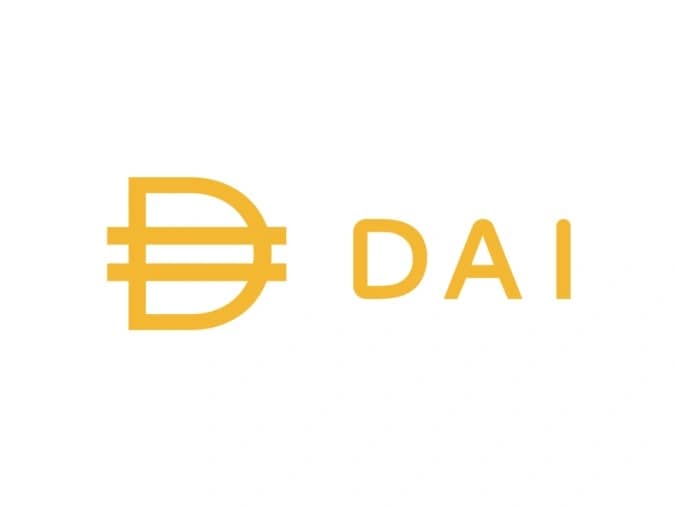위키 구독하기
Share wiki
Bookmark
DAI
DAI
DAI(다이)는 이더리움 기반 프로토콜인 MakerDAO(메이커다오)가 발행하는 스테이블코인(스테이블코인)으로, 미 달러와 1:1 가치를 유지하는 것을 목표로 합니다. 중개자 없이 암호화폐 자산의 직접적인 대출 및 차용을 가능하게 합니다. [8]
개요
USDT(테더)와 같이 중앙화된 기관이 법정 화폐(법정화폐) 자산을 관리하는 스테이블코인과 달리, DAI는 중앙 통제 기관이 없습니다. [9]
DAI를 얻으려면 거래소에서 ETH(이더)를 사용하여 DAI의 달러 상당액을 구매하거나, Maker 프로토콜을 사용하여 ETH 및 기타 자산을 담보로 제공하여 DAI를 생성할 수 있습니다. DAI 발행은 이더리움 기반 자산을 담보로 받아 미 달러와의 1:1 가치를 유지하는 데 사용되는 스마트 계약(스마트 계약)에 의해 이루어집니다.
MakerDAO(메이커다오)의 설립자 Rune Christensen(룬 크리스텐센)은 플랫폼의 지속적인 개편의 일환으로 새로운 스테이블코인(스테이블코인)과 거버넌스 토큰(거버넌스 토큰)을 도입할 계획을 발표했습니다. 이 제안은 2023년 5월 Maker의 거버넌스 포럼에 게시되었습니다.
이 새로운 토큰은 Maker의 기존 스테이블코인(스테이블코인)인 DAI와 거버넌스 토큰인 MKR(MKR)의 업그레이드 버전을 나타냅니다. 제안서에 명시된 바와 같이, 새로운 통합 브랜드와 웹사이트가 도입되는 것과 함께 "몇 달 안에" 출시될 것으로 예상됩니다.
이러한 토큰 업그레이드 외에도 Christensen은 Maker의 거버넌스 프로세스에 인공 지능을 통합하는 것을 제안했습니다. [13] [9]
담보 부채 포지션
DAI는 미 달러와 1:1 비율을 유지하는 탈중앙화 스테이블코인(스테이블코인)이며, ETH(이더), BAT, USDC(USDC), wBTC(wBTC), COMP(COMP) 등 다양한 암호화폐를 담보로 사용합니다. 이더리움 기반 프로토콜인 Maker 프로토콜을 통해 사용자는 담보 자산을 담보 부채 포지션(CDP)에 예치하여 DAI를 생성할 수 있으며, CDP는 안전한 저장소 역할을 합니다. 암호화폐(암호화폐) 담보의 변동성을 완화하기 위해 DAI는 종종 초과 담보화되어 생성된 DAI 가치보다 큰 예치금이 필요합니다. 예치된 담보를 회수하려면 사용자는 DAI를 반환하고 안정성 수수료를 지불해야 합니다. MakerDAO(메이커다오) 커뮤니티는 새로운 담보 옵션 추가에 대해 투표합니다. [8][9]
DAI 저축 금리
MakerDAO(메이커다오) 시스템은 2019년 11월에 업데이트되어 Dai 저축 금리를 도입했습니다. 이는 MakerDAO 투표에 의해 결정되는 특정 스마트 계약(스마트 계약)에 예치된 모든 Dai에 대해 지급되는 이자율입니다. DAI 토큰 보유자는 DAI에 대한 이자를 받습니다. Dai 저축 금리는 MakerDAO의 기본 거버넌스 토큰(거버넌스 토큰)인 MKR(MKR) 토큰 보유자에 의해 설정됩니다. 이러한 MKR 보유자는 DAI의 보증인 역할을 하며, 시스템 충돌 시 MKR의 잠재적인 청산(청산)으로 인해 시스템의 안정성을 유지하도록 유인됩니다. [10]
Maker 볼트
Maker 볼트는 스마트 계약(스마트 계약)으로, 사용자가 허용되는 담보 자산을 활용하여 Maker 프로토콜에서 Dai를 생성할 수 있도록 합니다. 사용자는 Oasis Borrow 및 커뮤니티에서 개발한 인터페이스를 포함한 다양한 사용자 인터페이스를 통해 Maker 프로토콜에 액세스하고 볼트를 생성할 수 있습니다. 볼트를 통해 Dai를 생성하면 잠긴 담보를 인출하기 위해 차용한 금액과 안정성 수수료를 상환해야 하는 의무가 발생합니다.
Maker 프로토콜에 모든 미상환 부채의 가치를 충당할 수 있도록 충분한 담보를 유지하기 위해, Maker 거버넌스에서 설정한 매개변수를 기반으로 너무 위험하다고 간주되는 Maker 볼트는 자동화된 Maker 프로토콜 경매를 통해 청산됩니다. 이 결정은 청산(청산) 비율을 볼트의 현재 담보 대 부채 비율과 비교하여 이루어집니다. 각 유형의 볼트에는 자체 청산 비율이 있으며, 이는 MKR(MKR) 투표자에 의해 설정되고 특정 담보 자산 유형의 위험 프로필을 기반으로 합니다.
Maker 프로토콜은 경매 메커니즘을 통해 담보에 대한 가격 정보를 사용할 수 없는 경우에도 볼트를 청산할 수 있습니다. 볼트가 청산되면 Maker 프로토콜은 담보를 가져와 내부 시장 기반 경매 메커니즘인 담보 경매를 사용하여 판매합니다. 담보 경매의 수익금은 볼트의 미상환 의무(볼트에 사용된 특정 담보 유형에 대해 MKR(MKR) 투표자에 의해 결정된 청산 패널티 수수료 포함)를 충당하는 데 사용됩니다. [12]
Dai 재단
덴마크에 위치한 Dai 재단은 자율적으로 운영되며 Maker 재단과는 별개입니다. 상표 및 코드 저작권과 같은 Maker 커뮤니티의 무형 자산을 보존하기 위해 설립되었으며, 위임에 명시된 엄격하고 명확한 목표를 준수합니다. Dai 재단 신탁 문서에 명시된 바와 같이, 재단의 역할은 기술적으로 탈중앙화될 수 없는 Maker 프로토콜의 요소를 보호하는 것입니다. [11]
MakerDAO에서 Sky로
2024년 5월 MakerDAO(메이커다오) 생태계는 광범위한 조직 및 제품 구조 조정의 일환으로 Maker(메이커)에서 Sky(스카이)로의 전환을 발표하며 중요한 리브랜딩을 거쳤습니다. 이 리브랜딩은 Maker 설립자 Rune Christensen(룬 크리스텐센)이 제시한 장기적인 비전인 "최종 게임 계획"의 최종 단계의 일부였습니다.
이러한 변화는 더욱 모듈화되고 확장 가능하며 사용자 친화적인 DeFi(디파이) 프레임워크를 만드는 것을 목표로 합니다. 핵심 아이디어는 프로토콜의 기본 구성 요소를 각각 자체 토큰과 거버넌스 시스템을 갖춘 별개의 단위인 SubDAO로 분리하는 것입니다. 이전에 MakerDAO(메이커다오)로 알려진 상위 조직은 이제 탈중앙화된 거버넌스 및 인프라 제공업체를 나타내는 Sky(스카이)로 불립니다.
DAI가 USDS가 됨
리브랜딩의 일환으로 오랫동안 사용되어 온 DAI 스테이블코인(스테이블코인)이 단계적으로 폐지되고 USDS(USDS)(미국 달러 서브스테이블)라는 새로운 자산으로 대체되고 있습니다. USDS는 새로운 Sky 생태계 구조와 일치하는 새롭게 단장된 정체성을 갖춘 DAI와 동일한 기능을 수행하도록 설계되었습니다.
전환은 2024년 5월에 시작되었으며, USDS는 출시 후 5일 만에 4억 9천만 달러를 초과하는 발행량을 기록하며 빠르게 채택되었습니다. DAI는 앞으로도 계속 존재하지만, USDS가 Sky 생태계의 기본 스테이블코인이 됨에 따라 그 역할은 점차 감소할 것으로 예상됩니다.
리브랜딩은 또한 새로운 프런트엔드 인터페이스, 스테이블코인 온/오프 램프 및 최적화된 거버넌스 시스템이 전환과 함께 도입됨에 따라 효율성 향상과 단순화된 사용자 상호 작용으로의 전환의 일부이기도 합니다.
잘못된 내용이 있나요?
